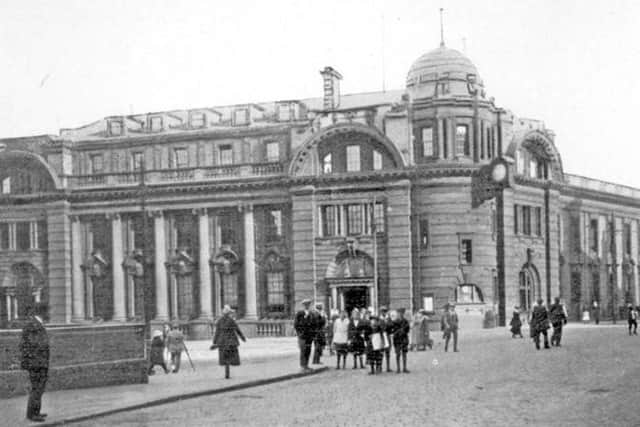Sheffield construction firm that filled landmark Hole in the Road


Tom Hamilton of Hamilton Plant Hire was amazed to find the photograph of the much-missed Sheffield landmark when he was looking through old documents. In another picture, the firm’s diggers are filling in an underground structure in Fitzalan Square. This picture was taken when Hamilton Plant Hire were contracted in the 1960s to demolish and fill in the old public toilets that sat under the square. Apparently they were Victorian, and extremely impressive, decorated with polished brass and even included scrubbing brushes so users could clean themselves up. Local history enthusiast Vin Malone recognised what the photograph showed immediately and even knew it was the ladies’ toilets! In the background you can see the rebuilt Marples Hotel, standing on the Sheffield Blitz bomb site of what was originally called the London Mart. Vin said it was renamed after one of its early landlords. Hamilton’s Plant Hire are a Sheffield family-run business, established in 1890, and currently based in Broad Oaks, Attercliffe. They started as a father and son team who used to do painting and decorating, and over the years the company evolved into doing civil projects, including structural concreting and steelwork. From this, they began to acquire plant hire equipment, until this became what the business is today – a plant hire company. Fitzalan Square was home to the city’s main market area until the 1930s.
In recent years the area became rundown and sad-looking, until Hallam University took over the old post office building in 2015 and turned it into Sheffield Institute of Arts.
Advertisement
Hide AdAdvertisement
Hide Ad

The grade II-listed building opened in 1910, operating as Sheffield’s head post office until 1999, when it moved into more modern premises nearby in the Co-op store in Angel Street, also much-missed. The space has now been turned into teaching rooms and practice studios, as well as an exciting exhibition and event space and cafe, which are all open to the public. Many readers will remember the square as a once thriving part of the city centre, with shops, banks and cinemas. The council announced plans in 2017 to renovate and partly pedestrianise the square and link it back to the rest of the city centre. Just around the corner, a tram stop in Castle Square now occupies the site of what was the Hole in the Road. It has a special place in the memories of Sheffielders and its image was recognised all over the world.
The landmark symbolised a Sheffield that was moving forward towards a bright future when it was created in 1967.
The Arundel Gate dual carriageway was built through a part of the city centre that had been badly damaged in the Blitz of December 1940. The complex of walkways and shops, created beneath a roundabout in Castle Square and open to the sky in its centre, was finally concreted over in the mid-1990s when Supertram came to Sheffield. The memory of the Hole in the Road has lived on among Sheffield residents as a unique place - albeit one with a somewhat mixed reputation. It became rather a bleak place to walk through in its later years and many people avoided it in the evenings. Everyone remembers the famous fish tank set into one of the walls, though, and many children passing through the walkways would stop to admire them. The fashion brand Topshop started life in 1964 as a clothing line designed to appeal to teenagers in the Peter Robinson’s store in Sheffield. Shoppers could browse their windows in one of the underpasses that led to the Hole in the Road. By 1970 it had become a stand-alone brand still going strong now, unlike Peter Robinson, which had disappeared by the end of that decade.